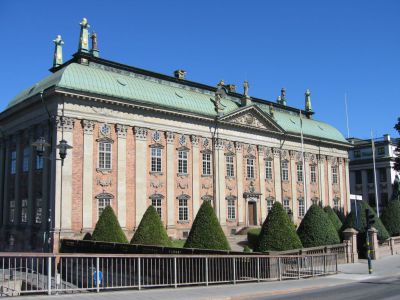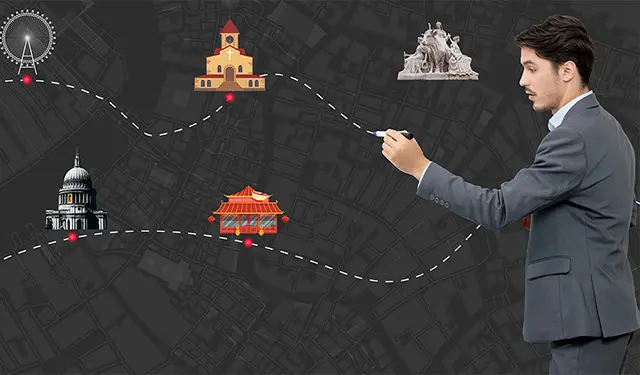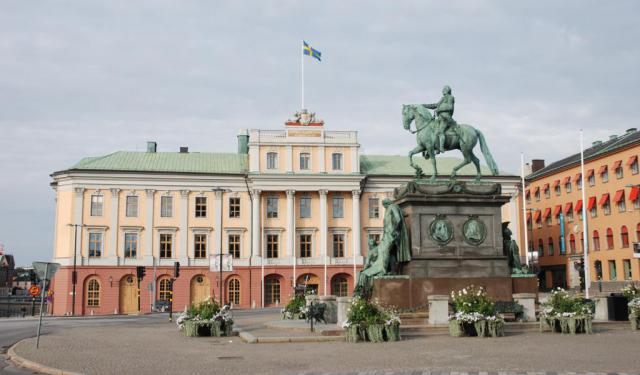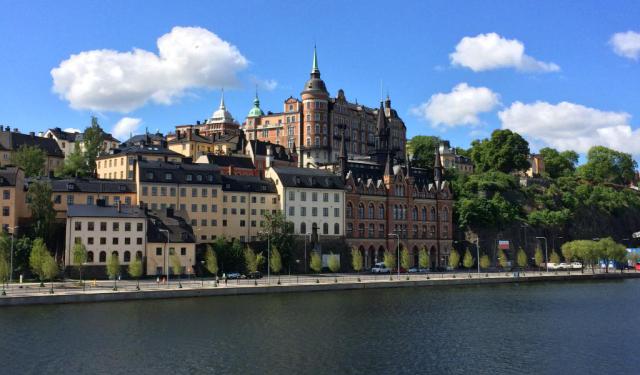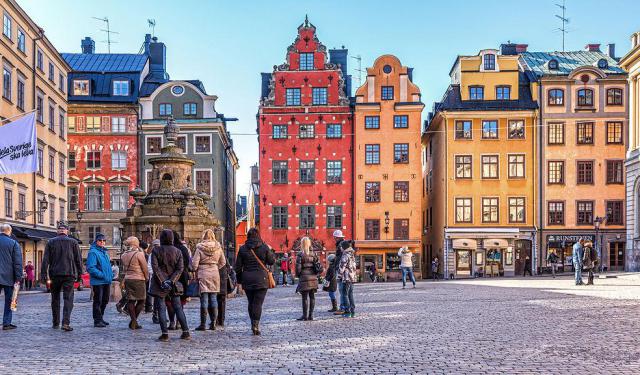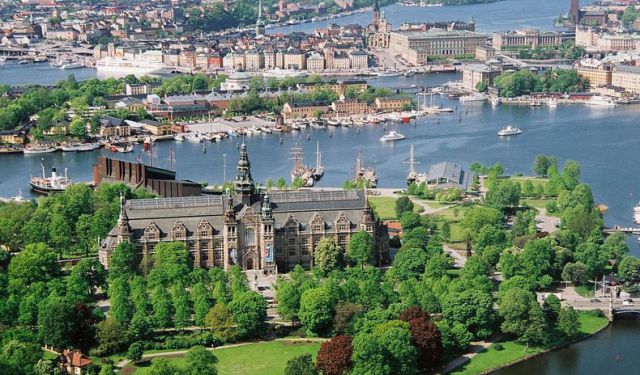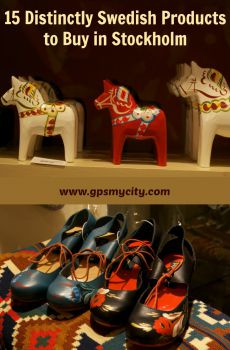Riddarhuset (House of Nobility), Stockholm
The House of Nobility (Riddarhuset) in Stockholm is a significant historical and cultural institution that serves as a central hub for the Swedish nobility. The term "Riddarhuset" translates to the "House of Knights," a name that reflects its medieval origins when the Swedish nobility primarily consisted of knights, alongside higher-ranking titles such as counts and barons. Today, the institution also represents esquires and untitled nobility, a tradition that traces back to the time of the Kalmar Union and the era of Sten Sture, who was the sole knight in Sweden at the time.
The building itself has a rich history, having served multiple important functions over the centuries. From the 17th to the 19th centuries, the House of Nobility was a chamber of the Swedish Parliament (Riksdag) of the Estates, which was akin to the British House of Lords. During this period, the institution played a crucial role in Sweden's legislative process. Additionally, in the 18th century, the building was used for public concerts, further embedding it in the cultural life of Stockholm.
However, with the establishment of a new parliamentary system in 1866, the role of the House of Nobility shifted to a more symbolic one. It became a quasi-official representative body for the nobility, with oversight by the Swedish government. Since 2003, the House of Nobility has functioned as a private institution, dedicated to preserving and promoting the traditions and cultural heritage of the Swedish nobility.
Architecturally, the building is a historic landmark in Stockholm’s Old Town. Its construction was initiated by Simon de la Vallée, a French-born architect, and completed by his son Jean in 1660. The building features a Latin inscription celebrating ancestral virtues and includes a statue of Gustav Vasa, who was the King of Sweden from 1523 to 1560. The design of the House of Nobility has also had an influence beyond Sweden, inspiring architecture in other countries, such as the old main library in Turku, Finland.
The building itself has a rich history, having served multiple important functions over the centuries. From the 17th to the 19th centuries, the House of Nobility was a chamber of the Swedish Parliament (Riksdag) of the Estates, which was akin to the British House of Lords. During this period, the institution played a crucial role in Sweden's legislative process. Additionally, in the 18th century, the building was used for public concerts, further embedding it in the cultural life of Stockholm.
However, with the establishment of a new parliamentary system in 1866, the role of the House of Nobility shifted to a more symbolic one. It became a quasi-official representative body for the nobility, with oversight by the Swedish government. Since 2003, the House of Nobility has functioned as a private institution, dedicated to preserving and promoting the traditions and cultural heritage of the Swedish nobility.
Architecturally, the building is a historic landmark in Stockholm’s Old Town. Its construction was initiated by Simon de la Vallée, a French-born architect, and completed by his son Jean in 1660. The building features a Latin inscription celebrating ancestral virtues and includes a statue of Gustav Vasa, who was the King of Sweden from 1523 to 1560. The design of the House of Nobility has also had an influence beyond Sweden, inspiring architecture in other countries, such as the old main library in Turku, Finland.
Want to visit this sight? Check out these Self-Guided Walking Tours in Stockholm. Alternatively, you can download the mobile app "GPSmyCity: Walks in 1K+ Cities" from Apple App Store or Google Play Store. The app turns your mobile device to a personal tour guide and it works offline, so no data plan is needed when traveling abroad.
Riddarhuset (House of Nobility) on Map
Sight Name: Riddarhuset (House of Nobility)
Sight Location: Stockholm, Sweden (See walking tours in Stockholm)
Sight Type: Attraction/Landmark
Guide(s) Containing This Sight:
Sight Location: Stockholm, Sweden (See walking tours in Stockholm)
Sight Type: Attraction/Landmark
Guide(s) Containing This Sight:
Walking Tours in Stockholm, Sweden
Create Your Own Walk in Stockholm
Creating your own self-guided walk in Stockholm is easy and fun. Choose the city attractions that you want to see and a walk route map will be created just for you. You can even set your hotel as the start point of the walk.
City Center (Norrmalm) Walk
Once upon a cobblestone, Norrmalm wasn’t even part of Stockholm. Up until 1635, it was a town of its own before it decided to join the “big leagues.” Fast forward a few centuries, and this central district has become a spirited jumble of old-world charm and postwar boldness. The 1950s and ‘60s came in swinging wrecking balls, knocking down swathes of old buildings to make room for future... view more
Tour Duration: 2 Hour(s)
Travel Distance: 3.0 Km or 1.9 Miles
Tour Duration: 2 Hour(s)
Travel Distance: 3.0 Km or 1.9 Miles
Sodermalm District Walking Tour
Södermalm, or "Söder" for short, is a borough in central Stockholm, incorporating a large island of the same name (formerly known as "Åsön"). Although considered an island, the water surrounding Södermalm to the north and south does not flow freely but passes through a series of locks. Visitors are charmed by the borough's narrow, cobbled streets and neat squares, as... view more
Tour Duration: 1 Hour(s)
Travel Distance: 2.3 Km or 1.4 Miles
Tour Duration: 1 Hour(s)
Travel Distance: 2.3 Km or 1.4 Miles
Old Town (Gamla Stan) Walking Tour
Stockholm, established around 1000 AD on an archipelago on the eastern coast of Sweden, flourished due to Viking-established trade routes. Originally a Viking site, it became a key iron trade hub by 1252. The city's name, derived from the Old Norse words for "log islet," reflects its historical significance, as a fortified island used for defense against sea invasions, and its... view more
Tour Duration: 2 Hour(s)
Travel Distance: 2.1 Km or 1.3 Miles
Tour Duration: 2 Hour(s)
Travel Distance: 2.1 Km or 1.3 Miles
The Museums Island Walk
With almost 70 museums in operation, Stockholm is one of the richest (in terms of museums) cities on the planet. The island of Djurgården, a cultural hotspot inside the capital, also known as the Museums Island, is home to an array of museums and other cultural attractions suitable for visitors of all ages.
One of the most renowned venues on the island is Scandinavia’s most popular museum,... view more
Tour Duration: 2 Hour(s)
Travel Distance: 3.3 Km or 2.1 Miles
One of the most renowned venues on the island is Scandinavia’s most popular museum,... view more
Tour Duration: 2 Hour(s)
Travel Distance: 3.3 Km or 2.1 Miles
Useful Travel Guides for Planning Your Trip
Souvenir Shopping Guide: 15 Distinctly Swedish Products to Buy in Stockholm
If you come to Stockholm on the trail of Karlsson-on-the-Roof character (Swedish: Karlsson på taket), created by Astrid Lindgren, you're bound to enjoy yourself big time! Just don't forget to spare some time for gift shopping, so as to please your loved ones back home. In doing so, you...
